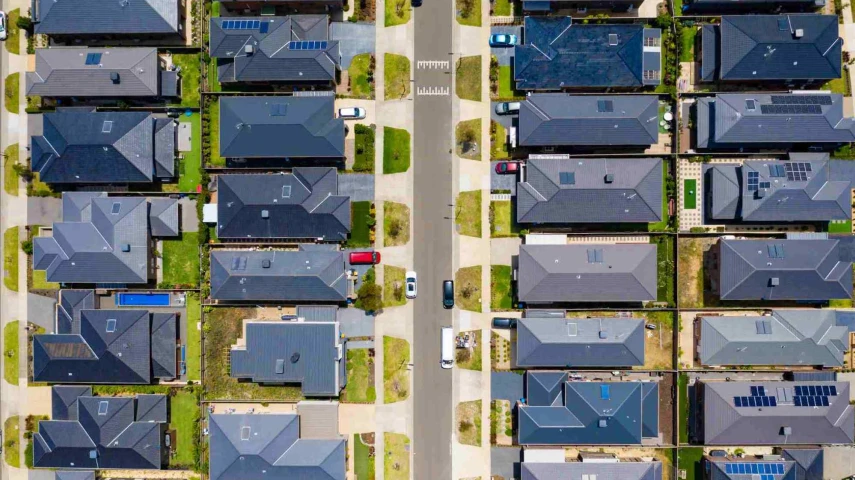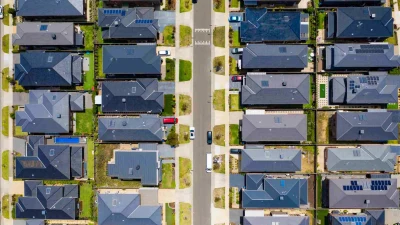Will structural inflation be the end of property growth?



There is no shortage of commentary floating around about the Reserve Bank’s efforts to slay inflation, which during the December quarter was as high as it has been in 30 years. But to really understand how we got here, we need to go back further than that.
During the 1960s, inflation averaged about 2.5 per cent and the cash rate had a long-running average of 1.5 per cent. Ten years of this meant Australians weren’t ready for the inflationary period that was around the corner. Human behaviour always lags behind economic realities. Those coming off fixed-rate mortgages will find that out soon enough.
Inflation skyrocketed in the 1970s from around 5 per cent in December 1972 to 17 per cent in June 1975. By the early 1980s, it was still hovering around 10 per cent and it took a recession between 1982 and 1983 to bring it back down to 2.5 per cent by December 1984.
Inflation hangs around
But inflation can be as stubborn as a stain on a rug, and within 12 months, it had jumped back up to 9 per cent.
“What was remarkable about the mid-1970s was not the magnitude of the rise in inflation — that was not unprecedented at all, as a glance at the 1950s demonstrates — but the fact that high inflation persisted, only being finally reduced to quite low levels by the early 1990s,” wrote a 33-year-old Glenn Stevens in a 1991 RBA paper. The insightful young Reserve Bank (RBA) staffer would go on to become governor of the Bank from 2006 to 2016.
“Other countries had difficulty in combating inflation too, but Australia's performance deteriorated relative to other countries in this period; it went from being a relatively low inflation country in the 1960s to a relatively high inflation one in the 1970s and 1980s,” Stevens noted.
While there are strong similarities between the tumultuous and inflationary decades of the 1970s and 1980s, the year 1990 marked a significant turning point, one that would herald three decades of deflation, 30 years of economic growth, soaring asset prices and the emergence of the modern Australian property investment phenomenon.
In January 1990, the RBA reduced the official cash rate to 17 per cent. Announcing the bank’s first monetary policy decision of 1990, governor Bernie Fraser reminded Australians that monetary and other policies had for some time been directed towards restraining the growth in domestic spending.
“It will take both time and continued concerted policy action to bring inflation and the current account deficit to acceptable levels,” he warned.
But by 1990, Australians had grown accustomed to the persistent nature of inflation. They were used to it. Cheap money was the norm for those living through the 1960s, but the opposite was the case in the 1980s. By the end of that decade, Australians believed high inflation and double-digit interest rates were the standard.
The 30-year boom
They were in for a pleasant surprise. Between January 1990 and January 2020, the RBA cash rate fell from 17 per cent to 0.75 per cent, sending home values soaring by close to 400 per cent return.
It was in these years that property speculation, and specifically the proliferation of interest-only investment loans, became a national pastime.
In 2017, almost one in four (23 per cent) of owner-occupied loans were interest-only. Meanwhile, almost two-thirds (64 per cent) of property investors were only paying interest on their investments. Helping to drive this demand for interest-only loans, aside from the falling cost of capital, was a commonly held belief among investors that property doubles in value every 10 years.
Yet no capital cities saw their average house prices double between 2012 and 2022. The only market to record 100 per cent growth during that time was regional Tasmania. And between 2002 and 2012, only Perth and Darwin saw home values double.
CoreLogic data shows that, nationally, home values have increased 382 per cent over the past 30 years. That’s an average annual growth rate of 5.4 per cent since July 1992.
Lower growth for longer
The next 12 months don’t look positive for Australian real estate. The RBA’s aggressive hiking cycle, combined with a large cohort of home owners coming off fixed rates, presents a challenging environment with little potential for capital growth. The cost of money is simply too high when you’re fighting inflation.
QBE’s Australian Housing Outlook 2022–2025 notes that the steepest falls in dwelling prices are expected to occur in the coming months, with late 2023 set to mark the bottom of the cycle.
Others are more bearish. Milford Asset Management’s Will Curtayne, who manages $1 billion in Australian assets, says property investors shouldn’t expect the same performance they once saw from property.
“Mortgage rates will bounce around sideways and hover between 3.5 and 7 per cent over the next decade. Perhaps it stabilises at 6 per cent,” he said. “But there won't be new lows in interest rates, and that means house price growth will basically track wage growth.”
Curtayne said there is a major reset underway and we are back to an era of structural inflation similar to the 1970s.
“You’re not going to become super wealthy through housing,” he said. “You won’t make that transformational wealth that people have made over the last 30 to 40 years.”
For property investors still clinging to the hope of recovery, AMP Capital’s chief economist, Dr Shane Oliver, has repeatedly pointed to previous cycles for clues.
“Property down cycles into 2009, 2012 and 2019 only saw prices sustainably bottom once interest rates started falling,” he said. “And rate cuts are still a way off yet.”
Oliver has forecast the RBA will continue hiking rates beyond 4 per cent.
Recommended for you
Lonsec and SQM Research have highlighted manager selection as a crucial risk for financial advisers when it comes to private market investments, particularly due to the clear performance dispersion.
Macquarie Asset Management has indicated its desire to commit the fast-growing wealth business in Australia by divesting part of its public investment business to Japanese investment bank Nomura.
Australia’s “sophisticated” financial services industry is a magnet for offshore fund managers, according to a global firm.
The latest Morningstar asset manager survey believes ETF providers are likely to retain the market share they have gained from active managers.















